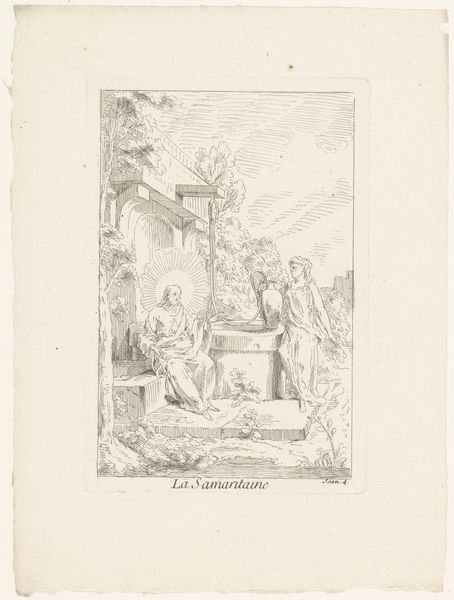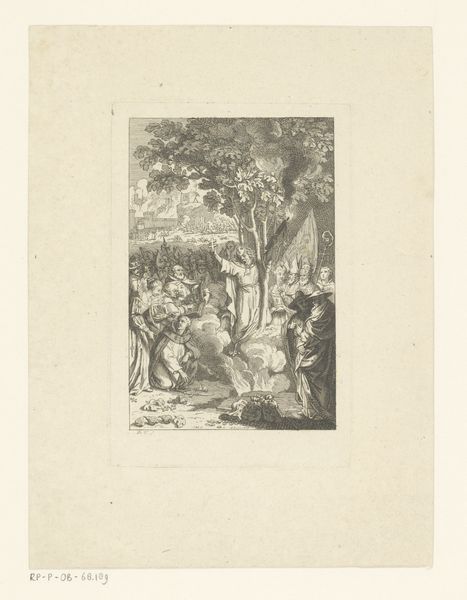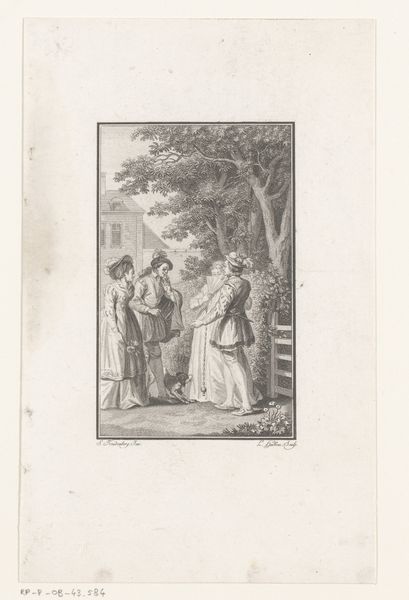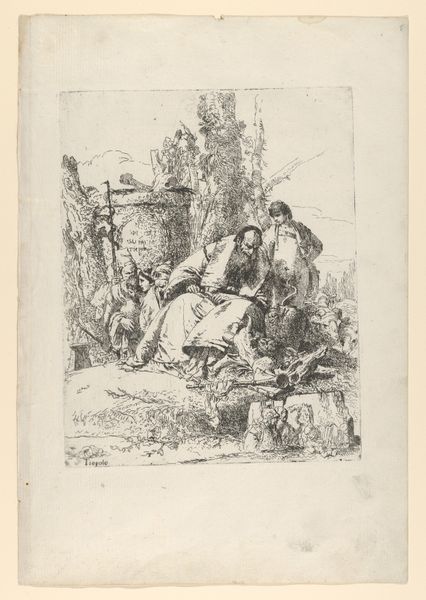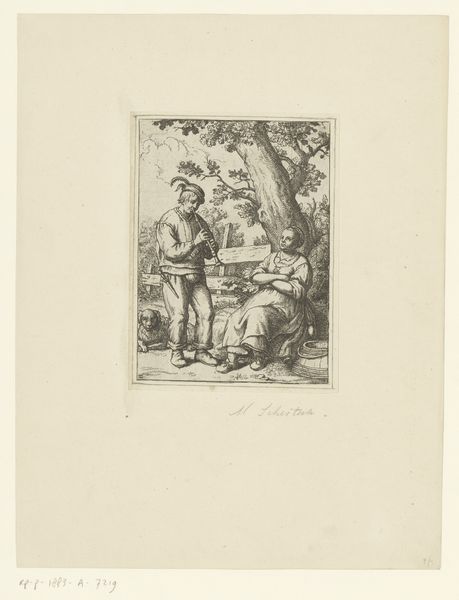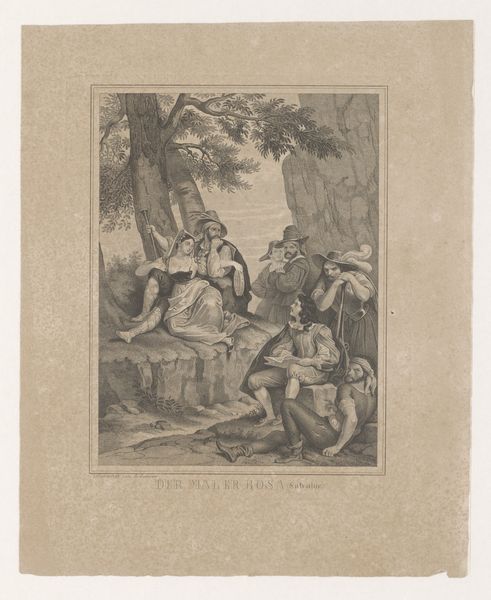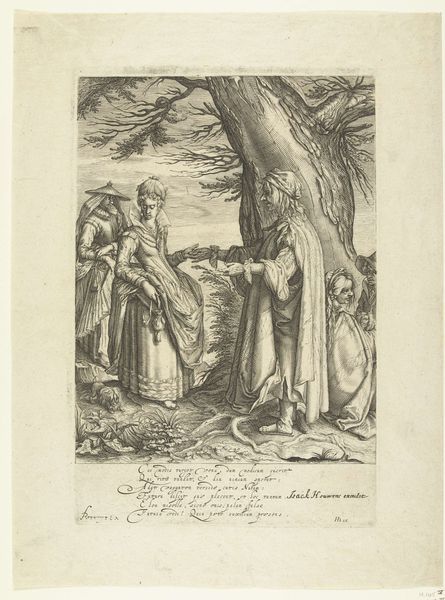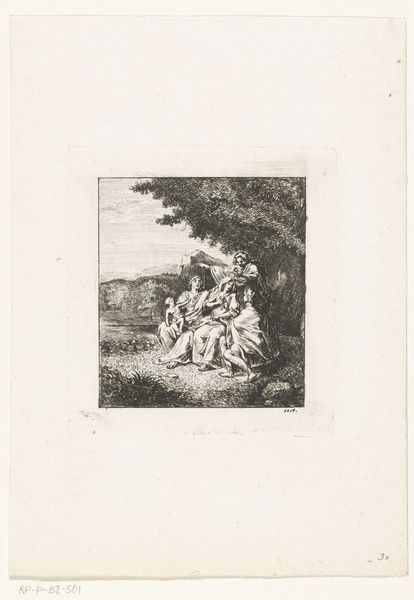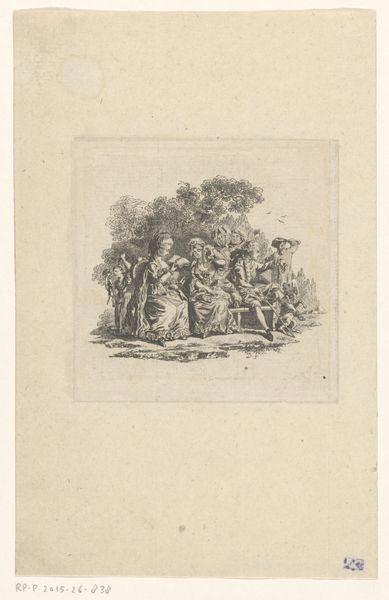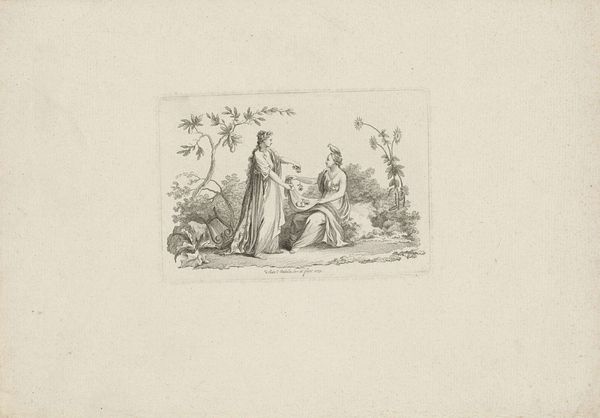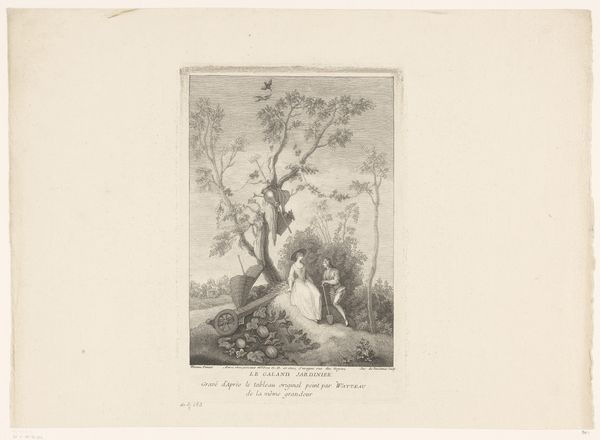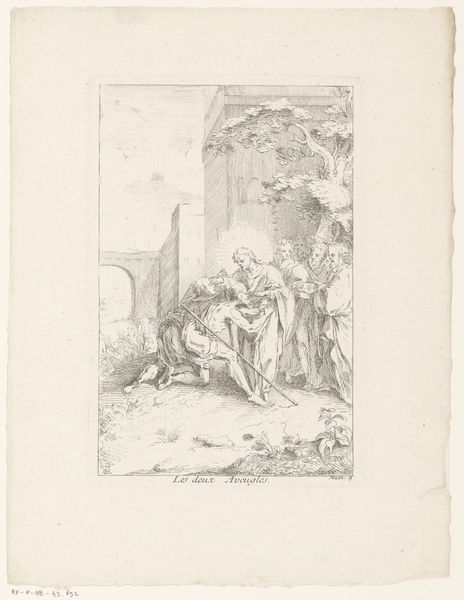
print, etching, engraving
#
light pencil work
#
narrative-art
#
baroque
# print
#
pen sketch
#
etching
#
pencil sketch
#
etching
#
personal sketchbook
#
ink drawing experimentation
#
pen-ink sketch
#
pen work
#
sketchbook drawing
#
sketchbook art
#
engraving
Dimensions: height 198 mm, width 128 mm
Copyright: Rijks Museum: Open Domain
Editor: This etching, "Christ Healing the Blind Man of Bethsaida" by Gabriel Huquier, created before 1732, is remarkable for its delicate lines. It feels very immediate, like a sketch, and captures a sense of movement and drama. What can you tell me about this work? Curator: The hurried lines indeed create a sense of immediacy. Let’s think about the function of prints during this period. They facilitated the circulation of images, making them accessible to a broader audience than unique paintings. Who would have purchased this and why? Was it destined for a book, framed for the home, or a portfolio of similar etchings? Its materiality – the paper, the ink, and the etched plate – determined its economic value and social reach. Editor: That’s a great point! So, its accessibility was key. The etching technique also seems significant. Was this about ease of reproduction or about the unique textures etching allows? Curator: Both. The controlled erosion of the metal plate through acid allowed for precise lines, but also subtle tonal variations based on the depth of the etching. But consider the labor involved. An artisan had to prepare the plate, meticulously transfer the design, etch it, and then make the prints. Each stage involved skilled labor and specific materials. It's also important to note that this wasn't a unique art object in the modern sense, but one of many potentially identical prints created. Editor: Thinking about the labor involved and its reproduction changes my understanding of the piece. It’s not just an image; it’s a product of a specific system of making and distribution. Curator: Exactly. By focusing on these aspects, we understand this work within its material and social context. These early reproductive processes made it possible for the broader public to interact with and consider the image's theme. Editor: Thanks. Looking at the work this way has helped me appreciate how process and material condition our experience of art. Curator: And perhaps now you see it’s also a means of communication—whose values did it uphold and disseminate at this time?
Comments
No comments
Be the first to comment and join the conversation on the ultimate creative platform.
